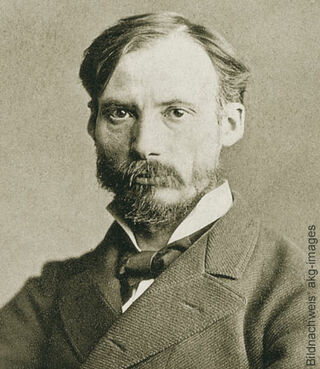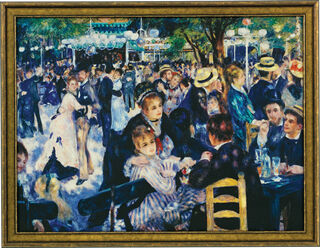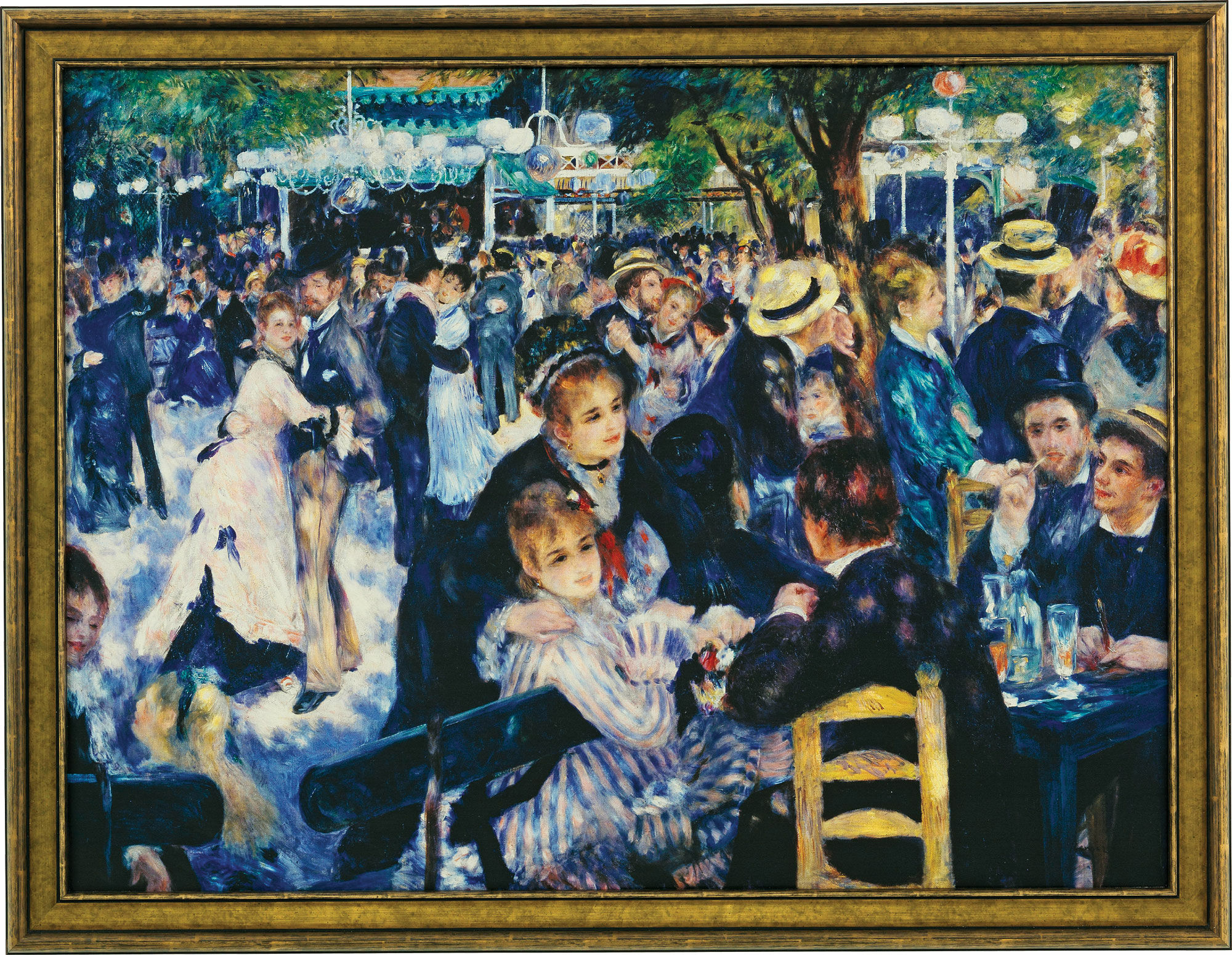Picture "Dance at Le moulin de la Galette" (1876), framed


Picture "Dance at Le moulin de la Galette" (1876), framed
Quick info
ars mundi Exclusive Edition | limited, 499 copies | certificate | reproduction, Giclée print on canvas | on stretcher frame | framed | size approx. 69 x 89 cm (h/w)
Detailed description
Picture "Dance at Le moulin de la Galette" (1876), framed
Art History(s) - Renoir's "Dance at Le moulin de la Galette".
There are two versions of Renoir's "Dance". One of them is housed at the Musée d'Orsay. The other one caused a furore in the art world when a Japanese collector bought it for 78 million dollars and announced his intention to have it buried with him when he died. The art world was abuzz. And happy when he sold the picture to a Swiss collector after all.
The loss would have been unimaginable: The "Dance at Le moulin de la Galette" is one of the most important works of early Impressionism. Above all due to its confidently executed Impressionist painting technique, in which every splash of colour carries meaning. He masterfully executed the colourful hustle and bustle. At the same time, the "Dance" demonstrates how a painter of Renoir's magnitude could depict the interplay of artificial and natural light. In addition, it is an interesting portrait of the Paris of his time from an art-historical point of view because it brings together Renoir's fellow painters and some of Renoir's models from this period, who also appear in other works, in a dancing round dance.
Original: Oil on canvas, privately owned.
Reproduced using the Fine Art Giclée process on artist's canvas, stretched on a stretcher frame and framed in an elegant real wood frame. Limited edition 499 copies, with certificate. Size approx. 69 x 89 cm (h/w). ars mundi Exclusive Edition.
Frame configurator
Customised picture frame

Frame configurator
Customised picture frame







About Auguste Renoir
1841-1919
The entire oeuvre of Renoir, who was born in Limoges in 1841, is characterised by his indestructible belief in the life-giving power of nature. The luminous colours of his landscapes, the sensual grace of his paintings of women and young girls bear witness to this with their light cheerfulness.
Initially, Renoir worked as a porcelain painter and studied the work of Antoine Watteau and François Boucher at the Louvre. In 1862, he began studying at the École des Beaux-Arts, then devoted himself to open-air painting in the late 1960s under the influence of the Barbizon School. Together with Claude Monet, Frédéric Bazille and Alfred Sisley, he discovered the special advantages of painting outdoors and maintained close contacts with Camille Pissarro and Paul Cézanne. Together with Claude Monet, he invented the loose brushstroke, with which the constant changing of colours of light can be captured and is the characteristic of Impressionism. In addition to landscape paintings, he also produced portraits of his painter friends and his favourite model Lise Tréhot.
In the summer of 1869, he produced a series of paintings of the restaurant "La Grenoullière", which he frequently visited together with Monet. These light-filled paintings illustrate particularly clearly his distinctive style of fleeting brushstrokes and delicate, light colours that capture the flickering of the air as well as the glistening of the water. In addition, Renoir occasionally expressed his consideration of the works of Courbet and Delacroix through muted tonality and denser brushwork.
However, after a visit to Italy in the 1880s, Renoir abandoned Impressionism. From then on, his focus was no longer on the reproduction of atmospheric moods, but on drawing and composition in the style of Raphael and Ingres.
His late work shows a tremendous power of colour, combined with elements of drawing, which give no hint of his severe rheumatic illness, especially of his hands. With the help of a student, sculptor Maillol, he also created several bronze sculptures during this period.
The most important painter and graphic artist of Impressionism died as a world-renowned artist on 3 December 1919 in Cagnes-sur-Mer.
Graphic or sculpture edition that was initiated by ars mundi and is available only at ars mundi or at distribution partners licensed by ars mundi.
Depiction of typical scenes from daily life in painting, whereby a distinction can be made between peasant, bourgeois and courtly genres.
The genre reached its peak and immense popularity in Dutch paintings of the 17th century. In the 18th century, especially in France, the courtly-galant painting became prominent while in Germany the bourgeois character was emphasised.
Giclée = derived from the French verb gicler "to squirt, spurt".
The giclée method is a digital printing process. It is a high-resolution, large-format printout on an inkjet printer with special different-coloured dye- or pigment-based inks (usually six to twelve). The colours are fade-proof, i.e. resistant to harmful UV light. They have a high richness of nuance, contrast and saturation.
The giclée process is suitable for art canvases, handmade and watercolour paper as well as for silk.
The style of Impressionism, which emerged in French painting around 1870, owes its name to Claude Monet's landscape 'Impression, Soleil Levant'. After initial rejection, it began a veritable triumphal procession.
Painters such as Claude Monet, Edgar Degas, Edouard Manet, Auguste Renoir and others created motifs from everyday life, urban and landscape scenes in bright, natural light.
Impressionism can be seen as a reaction to academic painting. The emphasis was not on content with its strict rules of painting structure, but on the object as it appears at any given moment, in an often random cut out. The reality was seen in all its variety of colours in natural lighting. The Studio painting was replaced by open-air painting.
Through the brightening of the palette and the dissolution of firm contours, a new approach to colour emerged. In many cases, the colours were no longer mixed on the palette but side by side on the canvas so that the final impression lies in the eye of the viewer with a certain distance. In "Pointillism", (with painters such as Georges Seurat or Paul Signac) this principle was taken to the extreme.
Outside France, Impressionism was taken up by painters such as Max Slevogt, Max Liebermann and Lovis Corinth in Germany, and by James A. M. Whistler in the United States.
However, Impressionism was only expressed to a limited extent in the art of sculpture. In the works of Auguste Rodin, who is considered one of the main representatives, a dissolution of surfaces is evident, in which the play of light and shadow is included in the artistic expression. Degas and Renoir created sculptures as well.






